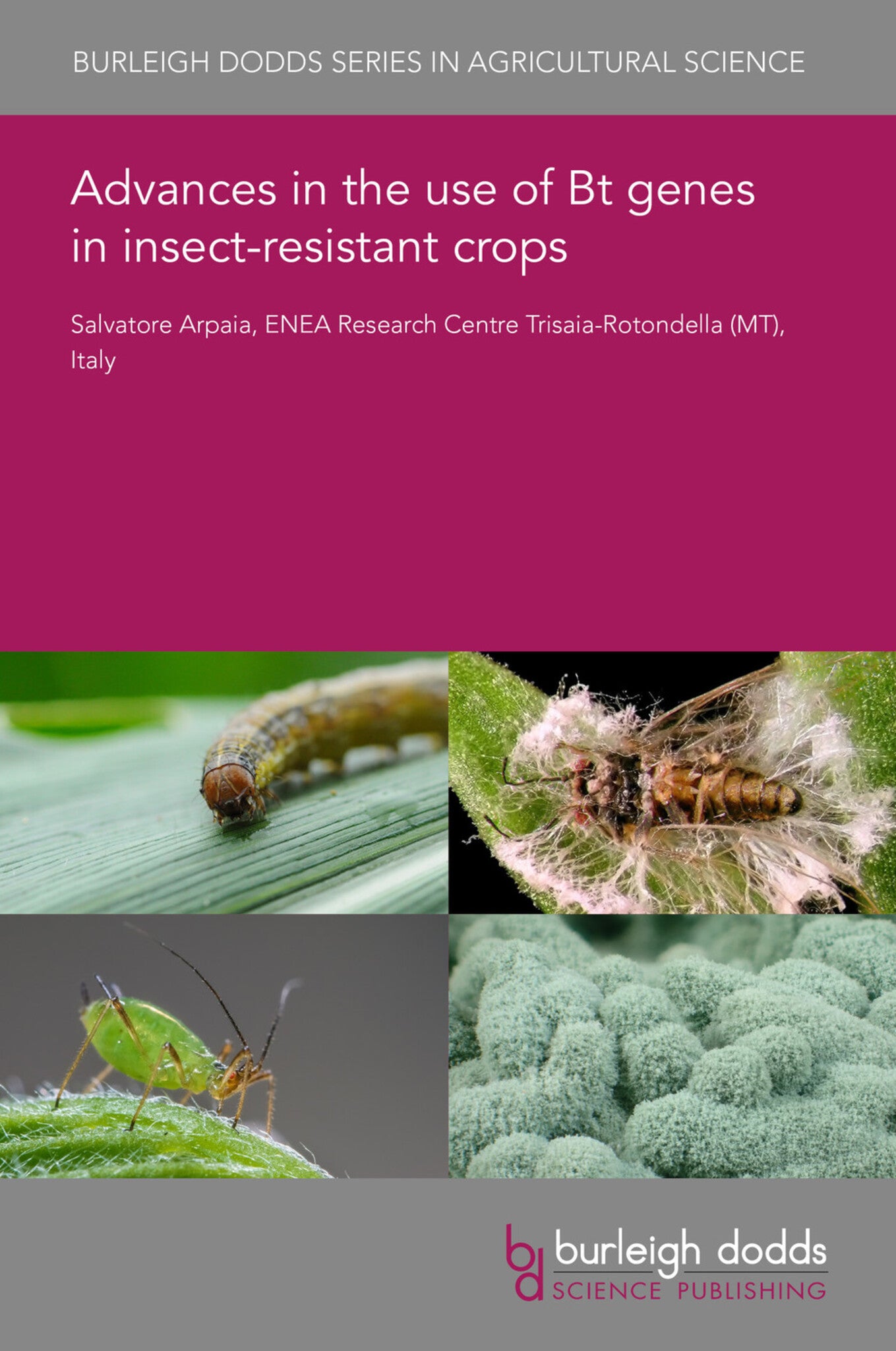We're sorry. An error has occurred
Please cancel or retry.
Advances in the use of Bt genes in insect-resistant crops
Regular price
£25.00
Sale price
£25.00
Regular price
£25.00
Unit price
/
per
Sale
Sold out
Re-stocking soon
Insecticidal toxins derived from the soil bacterium Bacillus thuringiensis (Bt) have been widely used as microbial pesticides to selectively control juveniles of Lepidoptera, Coleoptera, Diptera an...
Read More

Some error occured while loading the Quick View. Please close the Quick View and try reloading the page.
Couldn't load pickup availability
- Format:
-
23 March 2020

Insecticidal toxins derived from the soil bacterium Bacillus thuringiensis (Bt) have been widely used as microbial pesticides to selectively control juveniles of Lepidoptera, Coleoptera, Diptera and soil-dwelling nematodes. Synthetic genes derived from different strains of Bt have been used to produce genetically modified (GM) plants resistant to insects. GM crops represent one of the quickest adopted innovations in agriculture and are nowadays cultivated on about 200 Million ha worldwide. Their use is regulated by specific legislation regionally and an environmental risk assessment prior commercialization is mandatory. While research has produced a relevant body of information, some existing knowledge gaps and the new goals of pest control strategies, pose challenges to scholars, biotech companies and regulators. Effective insecticide resistance management programs, incorporation of GM crops within integrated pest management plans, maintenance of ecological services in agro-ecosystems represent relevant aspects to guarantee that the potential benefits of GM crops are fully achieved.

Price: £25.00
Publisher: Burleigh Dodds Science Publishing
Imprint: Burleigh Dodds Science Publishing
Series: Burleigh Dodds Series in Agricultural Science
Publication Date:
23 March 2020
ISBN: 9781786767028
Format: eBook
BISACs:
TECHNOLOGY & ENGINEERING / Pest Control, Pest control / plant diseases, TECHNOLOGY & ENGINEERING / Agriculture / Sustainable Agriculture, Sustainable agriculture, Agronomy and crop production

1 Introduction 2 Bacillus thuringiensis (Bt) insecticidal toxins 3 Incorporating Bt-expressing GM plants in integrated pest management (IPM) 4 Insecticide resistance 5 Conclusion and future trends 6 Acknowledgements 7 Where to look for further information 8 References



